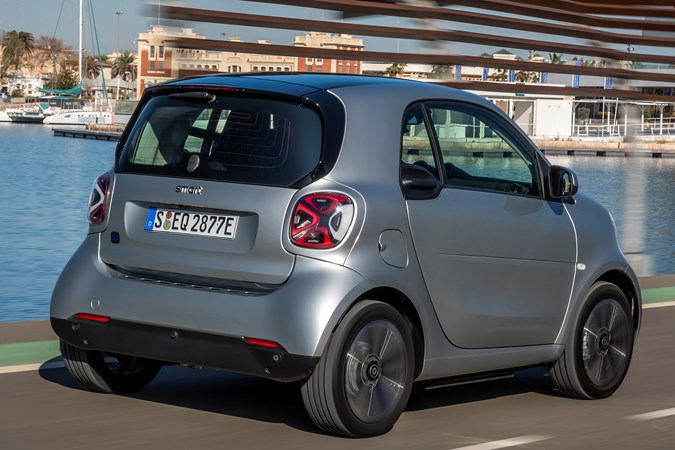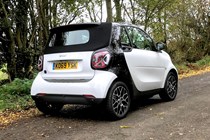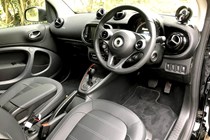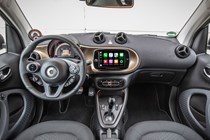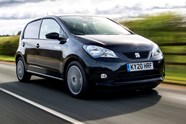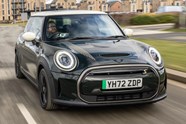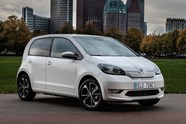
Smart EQ Fortwo review
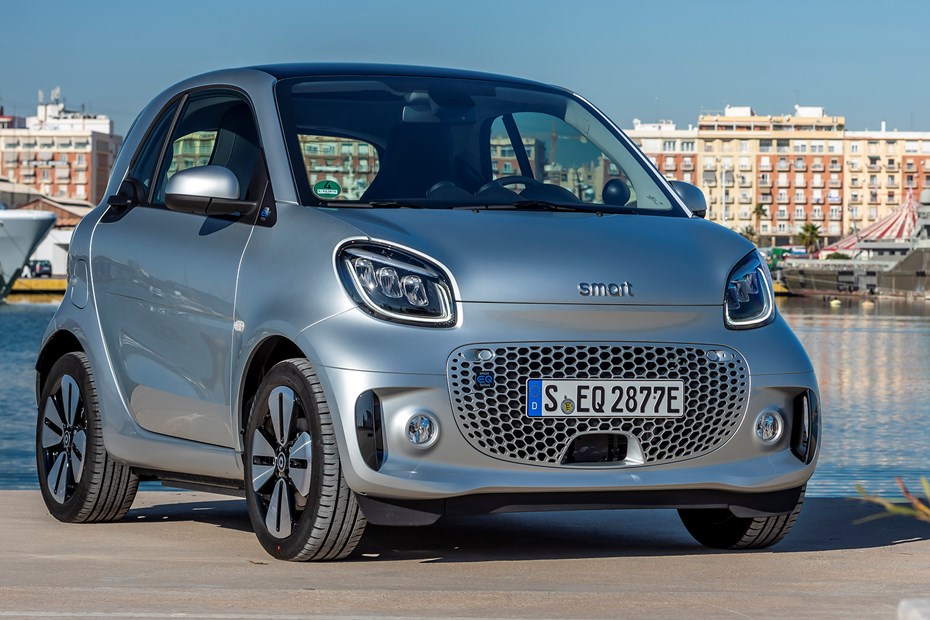
At a glance
| Price new | £20,550 - £27,995 |
|---|---|
| Used prices | £4,636 - £11,256 |
| Road tax cost | £195 |
| Insurance group | 10 - 13 |
Get an insurance quote with

|
|
| Fuel economy | 3.5 - 4.8 miles/kWh |
| Range | 74.5 - 84 miles |
| Miles per pound | 5.6 - 14.1 |
| Number of doors | 2 |
| View full specs for a specific version | |
Available fuel types
Fully electric
Pros & cons
- Great in cities, with a brilliantly-tight turning circle
- Quick to recharge and cheap to top-up with juice
- Nippy off the mark, great away from the lights
- Limited range will be a killer if you want to go further
- It really needs more boot room for shoppers
- Infotainment set-up is lacking in sophistication
Smart EQ Fortwo Coupe rivals
Overview
The electric-only Smart brand’s entry-level car is currently the cheapest EV in the UK, and if you’re looking for the perfect city car, this might be right up your street. The Smart range currently comprises of the Fortwo in both Coupe and Cabriolet guises and the four door Forfour, which extends Smart into the competitive electric supermini class.
Returning to the Smart Fortwo and it’s main competitor for your money is the SEAT Mii Electric. Cars such as the MINI Electric and Peugeot e-208 are pushing £8,000 more expensive. Once the Fiat 500 Electric hits the market and the cheaper entry-level model goes on sale, this situation may change drastically.
Once you start specifying your Smart with a few extra toys, this price difference can be all too easily absorbed, but for now – this city car pretty much has the market for itself. But despite that, Smart has put a lot of thought into the Fortwo, and the 2020 relaunch (when petrols were dropped) introduced a raft of technical updates to keep it on the pace.
Smart Fortwo details
For 2020, the Smart Fortwo became the EQ Fortwo and received a mild facelift over the old model to mark the point when the range went fully electric. Compared with the previous model, the biggest changes are visual, and limited to the new front-end styling which incorporates a bafflingly vast radiator grille, enlarged to suggest the rumbling presence of a petrol engine within. Mind you, Smart isn’t alone in this practice.
It was really is a blink-and-you’ll-miss-it refresh and a positive sign that the Smart Fortwo has a timeless style and is one of the most recognisable cars on the road. So why mess with this formula?
Other changes included tweaked headlamps, which neatly incorporate the front indicators, a wider front bumper with neat air-smoothing slots in the outer edges, and glitzy tail lamps. Elsewhere there are new alloy wheel designs and a fresh palette of colours for both the bodywork and Smart’s hallmark exoskeleton.
Successive models add extra equipment such as larger wheels, a panoramic sunroof, LED headlamps, heated leather seats and Brabus trim.
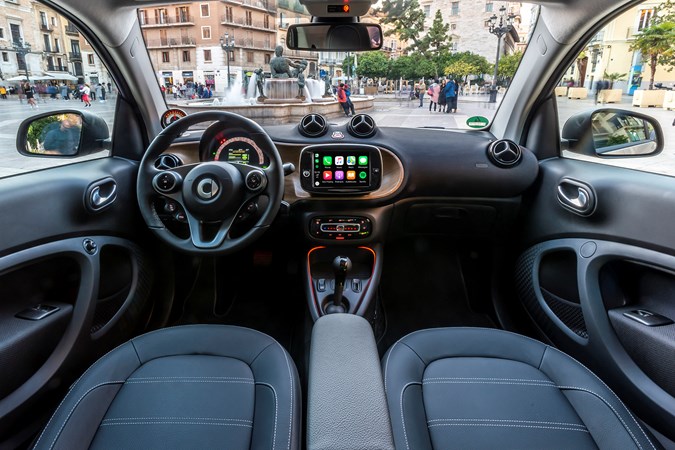
What’s it like inside?
On board, though, life is better. There’s no hint of scrimping about the full-sized seats, which are comfortable, if a tad firm, and, benefiting from seat and steering wheel height adjustment, the driving position’s fine.
A new dashboard has been ruthlessly assaulted with a giant ice cream scoop to house tidy instrumentation, a seven-inch touchscreen, Renault switchgear and – a nostalgic nod to smarts past – a single crab eye-stalked dash-top dial awash with electric powertrain status information.
In the practicality stakes, seating for two is not matched by luggage space for the same; the 260 litres available good for just the one squashy weekend bag and reinforcing the Fortwo’s fundamental remit as a city car, with range to match.
Simple range structure isn’t that simple
Smart offers just electric EQ models, but don’t think for a moment that makes the range nice and simple. It doesn’t. It also means that the appealing entry-level price point can really start to ramp up.
Firstly, there are seven trims to choose from: Prime, Prime Premium, Edition 1, Passion Advanced, Pulse Premium, Edition Nightsky and Prime Exclusive. Each model is available with bundles of different extra-cost options. Essentially that’s a large number of different combinations before you start deciding on what contrasting colours to choosing it in.
What’s it like to drive?
In a nutshell – and you can read more in the Engines and Comfort sections – it’s one for the city only. If you know where you’re going, though, driving the EQ Fortwo is a doddle, even if it may not often put a smile on your face. The sixpence-shaving, Black Cab-beating turning circle is, however, a riot.
Just as well, though, because that woefully slow and heavily lagging sat-nav requires its all too frequent deployment.
Read more: The cheapest electric cars you can buy in the UK
Click through the next few pages to read everything you need to know about the Smart EQ Fortwo including its practicality, how much it costs to run, what it’s like to drive – and whether we recommend buying one.
